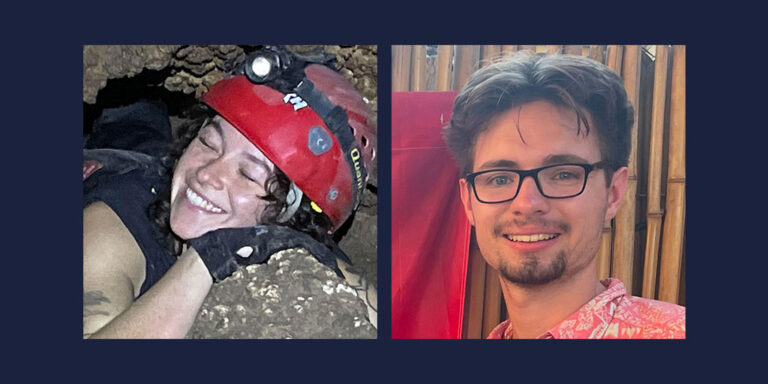The Challenge of Giving Credit Where Credit is Due: “Who’s on First?”
 Earlier this winter, I had dinner with a friend who is a senior scientist at a federal data and research center. At one point during the evening, our conversation turned to authorship practices and the diffusion of disciplinary-specific authorship styles to other disciplines. This diffusion was leading to some concern and even confusion among my friend’s colleagues, as many were initially unaware of, or did not fully appreciate, the disciplinary differences in authorship practice that exist. Furthermore, some were concerned that their contribution to a particular research effort may not be fully recognized by their peers if the ordering of the authorship differed from that expected by disciplinary standards. On the other hand, others acknowledged that the practices of different disciplines provided additional alternatives for handling the sometimes difficult issue of authorship order, especially for research efforts involving numerous junior and senior investigators.
Earlier this winter, I had dinner with a friend who is a senior scientist at a federal data and research center. At one point during the evening, our conversation turned to authorship practices and the diffusion of disciplinary-specific authorship styles to other disciplines. This diffusion was leading to some concern and even confusion among my friend’s colleagues, as many were initially unaware of, or did not fully appreciate, the disciplinary differences in authorship practice that exist. Furthermore, some were concerned that their contribution to a particular research effort may not be fully recognized by their peers if the ordering of the authorship differed from that expected by disciplinary standards. On the other hand, others acknowledged that the practices of different disciplines provided additional alternatives for handling the sometimes difficult issue of authorship order, especially for research efforts involving numerous junior and senior investigators.
As geographers become more and more involved in interdisciplinary research, we, too, are exposed to, and even participate in, a broader range of authorship practices. In this column, I explore authorship styles, drawing attention to the range of practices that exist and highlighting how geography can draw on the practices of other disciplines to allow for a broader range of options for conveying authors’ relative contributions. Please note this column is about authorship order, and I assume that the authorship list has been appropriately determined. Disciplinary differences can also exist in who is considered an author, but that topic merits separate discussion.
For most social sciences and many physical sciences, authorship order reflects the nature and quantity of the effort expended, with the first author position awarded to the author who contributed most to the conceptualization of the research design, performed the bulk of the data analysis, and drafted much of the manuscript. Subsequent authors are listed in order of their relative contribution. One exception is economics where alphabetical ordering of the authors has long been the tradition, a practice that other disciplines may frown upon or even consider a “cop out” to determining authorship order. A considerably different authorship practice has developed in the biological sciences. The student or postdoctoral associate who performed the majority of the analyses is typically awarded first authorship, whereas the last author position, referred to as “corresponding author”, is reserved for the senior scientist who provided overall direction and garnered funding for the research effort. Most often, in addition to being placed last, the corresponding author is defined as such in a footnote. Several variants on this style are seen. Co-first authorship is often used if the manuscript communicates approximately equally the efforts of more than one student, or a student and a postdoctoral associate, and co-corresponding authorship reflects that two or more research teams jointly contributed to the research. Such co-crediting is generally defined in a footnote to the author list. A “professor sandwich,” where senior scientists occupy both the first and last authorship positions, and are listed as co-corresponding authors, is an alternative when a manuscript reflects primarily the efforts of the senior rather than junior scientists on a team.
As I become more involved in extramurally-funded and interdisciplinary research, I find the authorship practice used in the biological sciences increasingly more appealing, and in some ways more honest, than alternative styles, including the “effort-based” ordering traditionally employed in geography. By definition, a funded research project was conceptualized by the principal investigators (i.e., the senior scientists), who also carefully laid out the initial research design and methods. These contributions should be reflected in the authorship of the manuscripts conveying project findings. The corresponding author (or co-corresponding authors) position at the end of the author list clearly communicates who was responsible for initial conceptualization without infringing on the contributions of the often junior scientists who performed the majority of the data collection and analysis. At the same time, as a research project progresses, it evolves substantially from its initial conception, and the first author (or co-first author) position acknowledges the creativity and the unique contributions of the junior scientists and their efforts to ensure the success of the project in addition to their data collection and analysis efforts. This authorship style also fits better my conception of a research team as a mentoring unit, with everyone (junior and senior scientists alike) actively contributing to all aspects of the project, from brainstorming on new directions to problem solving to data analysis and interpretation and eventually to manuscript preparation and revision. To this is added the recognition that the senior scientist(s) has the added responsibility to ensure that the needed resources are available to conduct the research and that the final project outcomes are significant, scientifically sound, and publishable.
Although I have experimented with this authorship style on a few publications, I have not used it extensively, primarily out of concern that many within geography are unfamiliar with this practice. I have been particularly reluctant to list myself as a corresponding author on manuscripts involving PhD students, even when the work was funded from grants on which I was the lead principal investigator, as I do not want the corresponding author designation to inadvertently detract from the student’s contribution in the eyes of the geography community. In this case, my research group uses the more familiar “effort based” authorship style, and I am typically listed as second author in the string of authors. But this style can also detract from the student’s contribution, as it does not as clearly distinguish my expected supervisory role, rather conflating it with my other contributions to the research effort. However, even if my students and I rarely employ this authorship practice for our own work, this style is showing up more often on our curricula vitae because of our participation in large research projects involving disciplines where this is the standard practice. In fact, my next task for this morning, after I submit this column, is to edit a manuscript from a multi-disciplinary effort that is employing a “professor sandwich” authorship style.
At the very least, geographers need to familiarize themselves with the range of authorship practices employed in the scientific literature, so that they do not misinterpret the contributions of other scientists, including some of their geography colleagues, who use alternative authorship styles than those common to geography. Geographers also should become familiar with differing authorship styles so that they can anticipate issues and concerns that may arise regarding authorship order as they participate in research teams involving disciplines with different authorship practices. I would also argue that in some situations the authorship practices of other disciplines may be more appropriate and more meaningful than the standard effort-based style used in geography, and that geography as a discipline should be open to these alternative practices. An initial first step could be simply to better accommodate the option of a corresponding author designation in the AAG’s journals, the Annals and the Professional Geographer. This might also make these journals more attractive outlets for publishing the synthetic findings of large interdisciplinary research efforts. In sum, I am arguing that geography and geographers should be open to exploring a range of authorship practices.
For those of you who may be thinking that authorship practice is a nerdy conversation topic for dinner with a good friend, I assure you that most of the evening was spent catching up on family and mutual friends and enjoying a very nice bottle of wine. But it is admittedly hard to leave work at the office …
I look forward to hearing your thoughts on authorship practices.
—Julie Winkler


